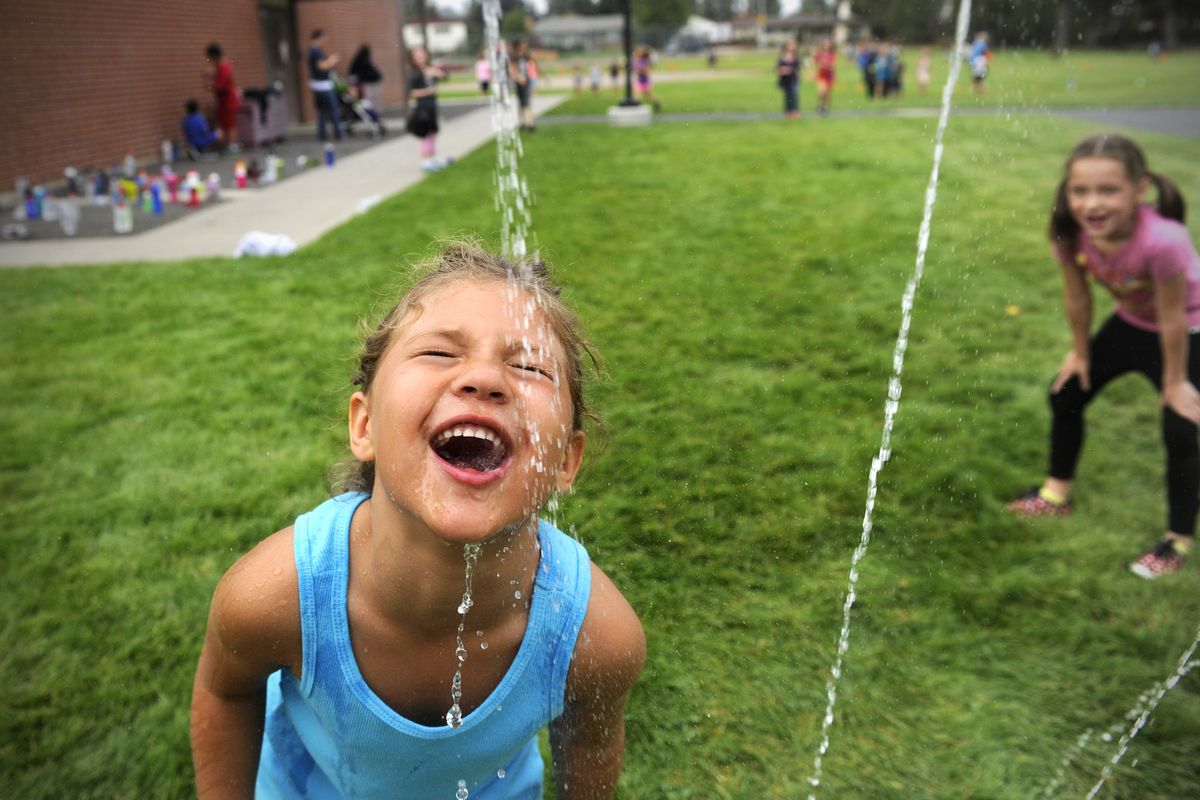Active For Youth maintains Spokane grade-school cross country for long run

Fourth-grader Max Aune-Wright is a runner. He runs in the halls at school. He runs in the park. And he’s run in the all-city cross country meet four years in a row.
“I like to feel the wind in my face,” the Linwood Elementary School student said. “I feel like I’m a really fast car, and it feels good to run.”
More than 170 Linwood kids in first- through sixth-grade – nearly half the school – are learning to run competitively. Practices started this week in preparation for the all-city meet in late October.
Cross country has been the only sport widely offered to K-6 children in Spokane Public Schools since 2008. The students wouldn’t have had that either without the help of a private nonprofit that stepped in after the district eliminated all elementary school sports.
The Active for Youth founders, a lawyer and local teacher, had two goals: Make sure students had at least one sport to stay active and be healthier; and demonstrate the importance of having sports in K-6 schools to the district’s administration.
“My wife taught at Bemiss at the time, and before programs were cut, she could see how important that program was. It gave them school spirit and confidence,” said Mike Bresson, who founded the organization with his wife, Heidi Bresson. Sports “helped them stay active and stay out of trouble.”
The Bresson’s efforts along with recent community outcry are doing the trick. Spokane Public Schools will offer basketball to elementary students across the district this fall.
The Active for Youth’s cross country program is 4,000 kids strong now. Linwood’s program is one of the district’s most robust.
The students “have a history of becoming some of North Central High School’s best cross country runners, Linwood Principal Gina Naccarato-Keele said.
“It’s a cultural big deal here,” she said.
Linwood teachers Linda Emoto and Cyndi Holzer coach the students three days a week. The kids run laps – the sixth-graders run farther than the first-graders. The children also do sprints and drills.
The whistles are a must to break up the chatter, and there are reminders about how to behave appropriately.
“Nobody’s touching anyone. Nobody’s rolling down the hills. Nobody’s picking up dirt,” Emoto told the second-graders, the largest group to sign up.
Trying to keep the kids safe, under control and getting them to listen is the challenge, Holzer said.
Students’ faces showed varying degrees of joy and intensity as they worked through the series of activities.
“I really like to run a lot,” Chloe Carson, 11, said. “It just makes me happy.”
Hailey Paris, 10, had a slightly different take: “It’s fun because teachers encourage you, and you get to hang out with your friends.”
Mike Bresson thinks running is an important foundation for all kids.
“You have to be able to run to play nearly all mainstream sports, so it’s important,” he said. “We don’t care if they run in the Olympics. We just want them to be healthy and active.”